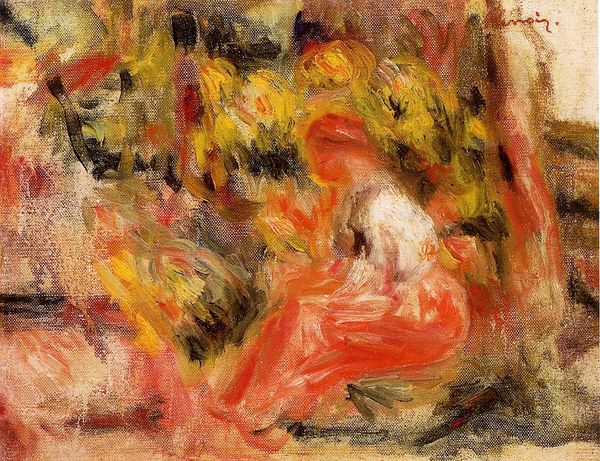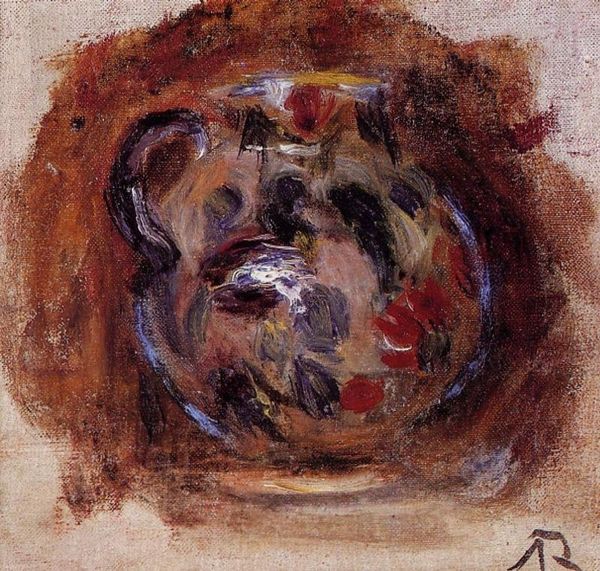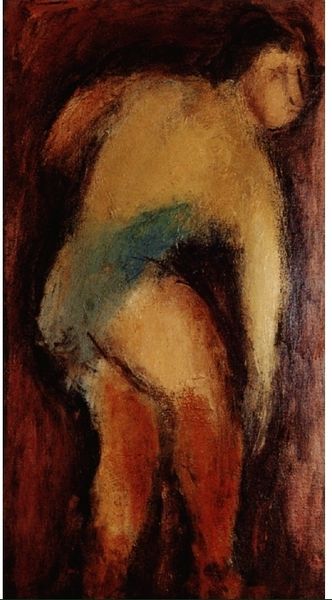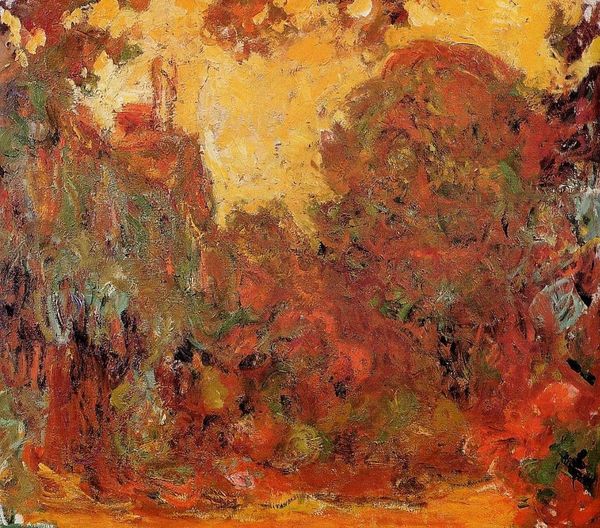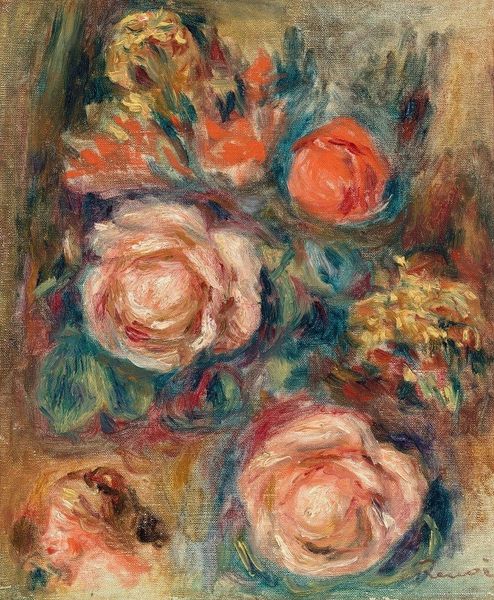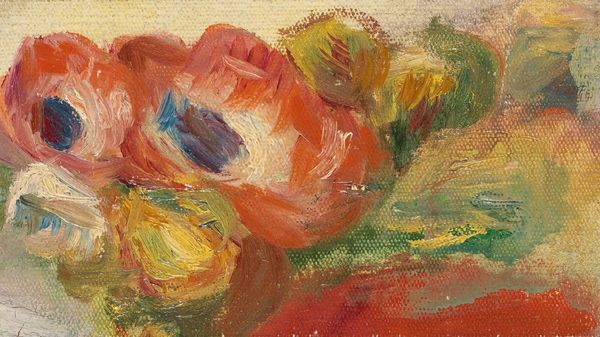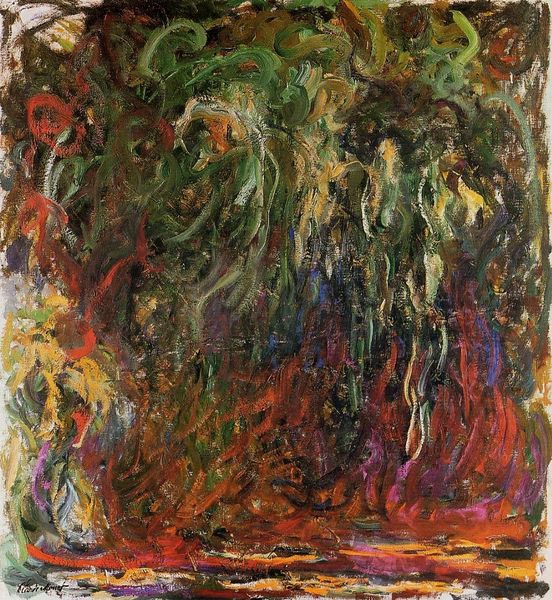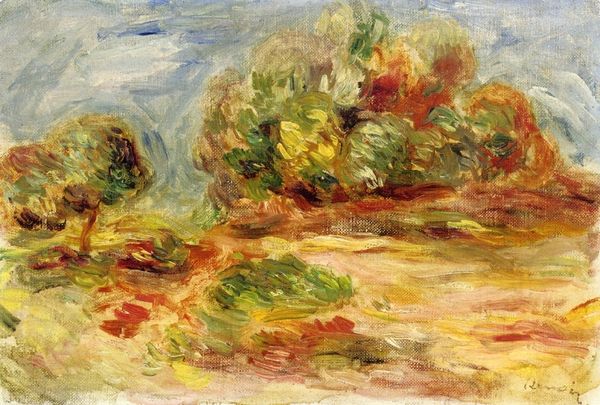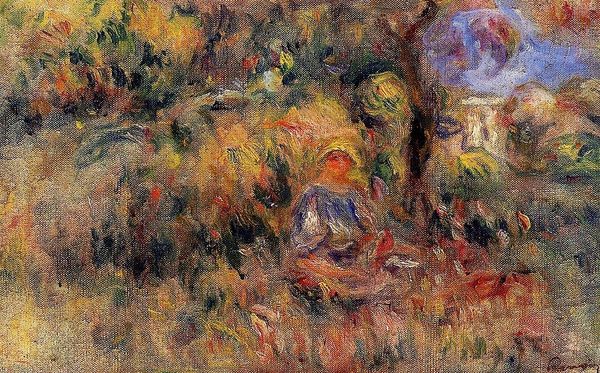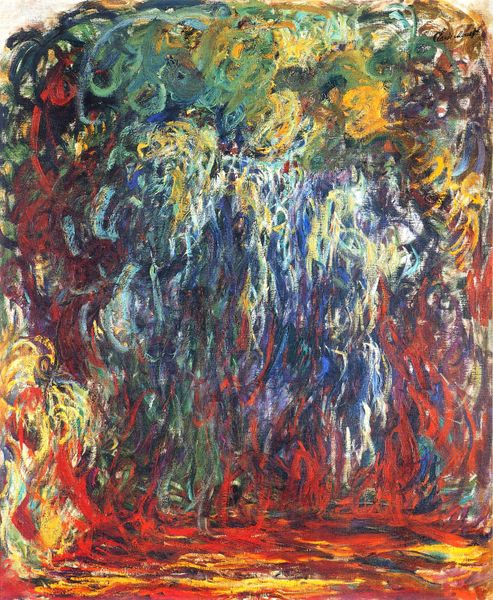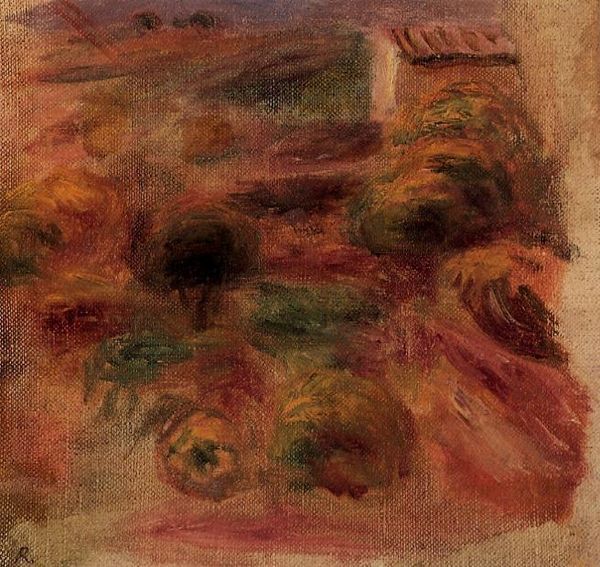
Copyright: Public domain
Curator: Welcome. Before us hangs "Pitcher," an oil painting executed by Pierre-Auguste Renoir in 1919. Note the characteristic loose brushwork. What strikes you first, Editor? Editor: It has an unfinished quality. A swirl of warm colors—rust, peach, cream—suggesting a form, rather than defining it. What context can you offer to us? Curator: At this point in his career, late in life, Renoir embraced a softer style, prioritizing feeling over meticulous representation. We see that ethos perfectly manifested here, no? This era saw many artists depart from Realism. Editor: Precisely! One can understand the impressionist label in this way. Considering this still life, "Pitcher", through a post-structuralist lens, observe the almost complete blurring of boundaries between object and background. Curator: I appreciate your invocation of the post-structural. There’s a definite destabilization of form and the objective gaze that is so prevalent within his contemporaries. The almost dissolving handle is exemplary of this idea. How might a contemporary audience interpret such a seemingly straightforward piece, I wonder. Editor: I wonder if the focus on domestic life served to promote conservative values? Or did it subvert academic painting's obsession with grand historical themes, democratizing art and its subject matter? The painting doesn't stand alone but engages with broader social trends of its day. Curator: A complex, generative point to consider. One final observation – there's a sense of ephemerality in how he depicts the object, the flowers rendered in these transient brushstrokes seem so very impermanent. Perhaps Renoir hints at something of our shared experience? Editor: It makes you consider Renoir's legacy; how a late-career piece such as this may have pushed boundaries, and ultimately solidified Renoir's prominent place in the historical narratives of 19th and 20th-century painting.
Comments
No comments
Be the first to comment and join the conversation on the ultimate creative platform.
